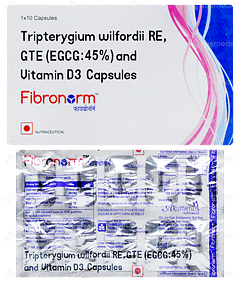Heart Failure
Heart failure is a chronic condition where the heart muscle fails to pump blood effectively, leading to various symptoms such as shortness of breath, fatigue, and swelling in the legs and feet. It can be caused by factors like heart attacks, high blood pressure, and diabetes, and is classified into four stages based on severity. Treatment focuses on managing symptoms and preventing further progression.
Last updated on : 13 Dec, 2024
Read time : 15 mins

Overview of Disease
Heart failure is a serious medical condition that affects millions of people worldwide. It occurs when the heart muscle is unable to pump enough blood to meet the body's demands for oxygen and nutrients. This can lead to a range of symptoms that can significantly impact a person's quality of life. In this article, we will discuss the causes, stages, and types of heart failure that are crucial for effective management and prevention.
What is Heart Failure?
Heart failure, also known as congestive heart failure (CHF), is a condition in which the heart muscle becomes weakened or damaged, making it difficult for the heart to pump blood efficiently. This can cause blood to back up in the lungs, leading to shortness of breath, and can also cause fluid retention in the legs, ankles, and feet. Heart failure is a progressive condition that can worsen over time if not properly managed, but with early diagnosis and appropriate treatment, many people with heart failure can lead full and active lives.
Key Factors about Heart Failure
| Category | Details |
| Also Referred as | Congestive Heart Failure, Cardiac Failure, CHF |
| Commonly Occurs In | People over 65, African-Americans, Diabetes, High Blood Pressure |
| Affected Organ | Heart, Lungs, Kidneys, Liver |
| Type | Heart failure with reduced ejection fraction (HFrEF), heart failure with preserved ejection fraction (HFpEF), right-sided, left-sided, and biventricular heart failure |
| Common Signs | Shortness of Breath, Swelling, Fatigue, Coughing, Abdominal Pain, Nausea |
| Consulting Specialist | Cardiologist |
| Treatement Procedures | Medications, lifestyle changes, cardiac resynchronization therapy (CRT), pacemakers, implantable defibrillators, and ventricular assist devices (VADs) |
| Managed By | Diuretics (Hydrochlorothiazide & Chlorthalidone), Beta-blockers (Atenolol & Metoprolol), Aldosterone antagonist (Spironolactone & Eplerenone), Angiotensin II receptor blockers (Telmisartan & Losartan), ACE inhibitors |
| Mimiciking Condition | Chronic Obstructive Pulmonary Disease (COPD), Pulmonary Hypertension, Peripheral Vascular Disease (PVD) |
Types of Heart Failure
There are two main types of heart failure, based on which side of the heart is affected. These include:
Left-sided heart failure: This type of heart failure occurs when the left ventricle, which is responsible for pumping oxygenated blood to the body, is not functioning properly. There are two subtypes of left-sided heart failure:
Systolic: In this subtype, the left ventricle cannot contract efficiently, leading to reduced blood ejection.
Diastolic: In this subtype, the left ventricle cannot relax normally, making it difficult for the heart to fill with blood.
Right-sided heart failure: This type of heart failure occurs when the right ventricle, which is responsible for pumping deoxygenated blood to the lungs, is not functioning properly. Right-sided heart failure often develops as a result of left-sided heart failure, as the increased pressure in the lungs can put a strain on the right side of the heart.
Early Signs of Heart Failure
The early signs of heart failure include:
Tiredness
Shortness of breath
Cough or wheezing
Swelling (oedema)
Trouble doing daily activities
Symptoms of Heart Failure
Heart failure can manifest through various symptoms, depending on the severity and progression of the condition. Some common symptoms include:
Shortness of breath: Individuals may experience breathlessness during physical activity or while resting, and they might be awakened from sleep due to difficulty breathing.
Fatigue and weakness: Many patients report feeling tired and weak, particularly in the legs, which can make daily activities challenging.
Persistent coughing or wheezing: A persistent cough may occur, often accompanied by pink or blood-tinged mucus due to fluid buildup in the lungs.
Buildup of excess fluid: Patients may notice swelling in the feet, ankles, legs, fingers, and abdomen, which can lead to unexpected weight gain.
Lack of appetite and nausea: Some individuals may feel full or experience nausea due to digestive issues caused by reduced blood flow to the stomach.
Confusion and impaired thinking: Reduced blood flow to the brain can result in symptoms such as memory loss and disorientation.
Increased heart rate: Patients may experience heart palpitations, feeling as though their heart is racing or throbbing as it tries to compensate for decreased pumping capacity.
Weight changes: Sudden weight gain or loss can indicate fluid retention or issues with nutrient absorption, both of which are common in heart failure.
If you notice any of these heart failure symptoms, especially if they are new, worsening, or frequent, it's essential to seek medical attention promptly for an accurate diagnosis.
Stages of Heart Failure
The stages of heart failure include:
Stage A (at risk for heart failure): Individuals with risk factors such as diabetes, hypertension, or a family history of heart failure but without structural heart disease or symptoms of heart failure.
Stage B (pre-heart failure): Patients with structural heart disease but no symptoms of heart failure. This includes those with left ventricular dysfunction or hypertrophy without clinical manifestations.
Stage C (symptomatic heart failure): Individuals with structural heart disease and current or previous symptoms of heart failure. This stage is characterised by the presence of symptoms that significantly impact daily life.
Stage D (advanced heart failure): Patients with severe debilitating symptoms or repeated hospitalisations despite guideline-directed medical therapy (GDMT). This stage indicates advanced disease requiring specialised interventions.
Causes of Heart Failure
Heart failure can develop due to various underlying conditions that damage or weaken the heart muscle. Some of the main causes of heart failure include:
Coronary artery disease (CAD): This condition involves the narrowing or blockage of the arteries that supply blood and oxygen to the heart. Over time, this can weaken the heart muscle, leading to heart failure.
High blood pressure: Uncontrolled high blood pressure increases the workload on the heart. This extra strain can cause the heart to enlarge and weaken over time, ultimately impairing its ability to pump blood effectively.
Heart valve problems: Damaged or faulty heart valves can disrupt normal blood flow, placing additional strain on the heart and leading to heart failure.
Cardiomyopathy: This refers to inherited or acquired conditions that damage the heart muscle. Such damage reduces the heart's ability to pump blood effectively, contributing to heart failure.
Arrhythmias: Abnormal heart rhythms can affect the heart's pumping efficiency. These irregularities can lead to heart failure if not properly managed.
Other chronic conditions: Additional factors, such as diabetes, thyroid disorders, obesity, or the buildup of iron or protein in the body, can also contribute to the development of heart failure. Managing these conditions is essential to reducing the risk of heart failure.
Risk Factors
Several factors can increase an individual's risk of developing heart failure, including:
Age (65 or older)
Family history of heart failure
Smoking
Obesity
Diabetes
High blood pressure
Coronary artery disease
Previous heart attack
Valvular heart disease
Congenital heart defects
Certain medications (e.g., chemotherapy medicines)
Who's at Risk?
Several groups have a higher risk of developing heart failure, including:
Old age
High blood pressure or hypertension
Coronary artery disease
Diabetes
Being overweight or obese
Smoking, tobacco use, and excessive alcohol consumption
Those who have suffered a previous heart attack or myocardial infarction
Complications
Heart failure can lead to various complications that affect multiple organs and systems in the body. Some of these complications include:
Cardiac complications: These may include irregular heart rhythms or arrhythmias, such as atrial fibrillation and ventricular tachycardia. The increased workload on the heart can damage the heart valves, reducing their efficiency and leading to further cardiovascular issues.
Renal complications: Renal complications are common due to reduced blood flow to the kidneys, which can result in kidney damage or failure. This may necessitate dialysis or even a kidney transplant.
Liver complications: The liver can also be affected in individuals with heart failure, as fluid buildup may put extra pressure on the organ. This can lead to scarring (fibrosis) and impaired liver function, complicating the overall management of heart failure.
Respiratory complications: Respiratory complications, such as pulmonary oedema, occur when fluid accumulates in the lungs, making breathing difficult. This condition is referred to as pulmonary congestion and can lead to significant respiratory distress.
Musculoskeletal complications: Heart failure can impact muscle and fat metabolism, resulting in musculoskeletal complications like unintentional weight loss and muscle weakness. These changes can further reduce a patient's ability to engage in physical activity.
Thromboembolic complications: Thromboembolic complications, including stroke and other thromboembolic events, can arise from low cardiac output and conditions like atrial fibrillation. These complications pose a significant risk and require careful monitoring and management.
Prevention of Heart Failure
Preventing heart failure involves adopting a healthy lifestyle and managing risk factors. Some of the preventative measures include:
Maintain a balanced diet: Consuming a diet low in saturated fats, trans fats, and sodium can significantly contribute to heart health. Incorporating plenty of fruits, vegetables, whole grains, and lean proteins is essential for overall cardiovascular well-being.
Engage in regular exercise: Aim for at least 150 minutes of moderate-intensity aerobic activity each week. Regular exercise strengthens the heart muscle, improves circulation, and enhances overall cardiovascular health.
Manage stress: Utilising relaxation techniques, such as meditation, yoga, or deep breathing exercises, can help reduce stress levels, which is beneficial for heart health.
Control underlying health conditions: Keeping blood pressure, cholesterol, and blood sugar levels within a healthy range is crucial in preventing heart failure. If prescribed, it’s important to take medications as directed by a doctor to manage these conditions effectively.
Avoid smoking and limit alcohol consumption: Quitting smoking and reducing alcohol intake are critical steps in lowering the risk of heart failure and improving overall cardiovascular health.
Regular check-ups: For individuals with a family history of heart failure or other heart diseases, scheduling regular check-ups with a cardiologist can help detect early signs and allow for timely intervention.
Diagnosis & Tests
Diagnosing heart failure involves a combination of physical examination, medical history review, and various tests. These include:
Physical examination: During the physical exam, your doctor will check for signs of fluid buildup, such as swollen ankles or crackles in your lungs, and listen to your heart for abnormal sounds that may indicate heart valve problems or an irregular heartbeat.
Blood tests: These can help identify underlying conditions that may contribute to heart failure, such as anaemia or thyroid problems.
Electrocardiogram (ECG): This non-invasive test records the electrical activity of your heart and can detect irregularities in heart rhythm or signs of a previous heart attack.
Echocardiogram: This ultrasound test provides detailed images of your heart, allowing your doctor to assess its size, structure, and function.
Stress test: This test involves exercising on a treadmill or stationary bike while your heart's response is monitored, helping to identify coronary artery disease or other heart problems.
Cardiac catheterisation: In some cases, a thin, flexible tube called a catheter may be inserted into a blood vessel and guided to your heart to measure pressure and assess blood flow.
Treatment & Management
The management of heart failure involves a comprehensive approach that includes lifestyle modifications, pharmacological interventions, and, in some cases, devices or surgical procedures. The treatment options include:
Lifestyle changes: This includes reducing sodium intake, quitting smoking, limiting alcohol consumption, maintaining a healthy weight, and engaging in regular physical activity as tolerated.
Medications: These include angiotensin-converting enzyme (ACE) inhibitors and angiotensin receptor blockers (ARBs) to improve heart efficiency; beta blockers to slow the heart rate and reduce stress; diuretics to eliminate excess fluid; aldosterone antagonists to combat fluid retention; digoxin to strengthen heart contractions; and sodium-glucose cotransporter 2 (SGLT2) inhibitors, which lower the risk of hospitalisation and death in heart failure patients.
Device therapies: In some cases, device therapies may be recommended to help manage heart failure. These include:
Implantable cardioverter-defibrillators (ICDs): These devices monitor the heart rhythm and deliver electrical shocks to restore a normal heartbeat if dangerous arrhythmias occur.
Cardiac resynchronisation therapy (CRT): This involves implanting a special pacemaker that synchronises the contractions of the heart's ventricles, improving pumping efficiency.
Left ventricular assist devices (LVADs): These mechanical pumps are implanted to help the heart pump blood more effectively in patients with advanced heart failure.
Surgery: Surgical options for heart failure are typically reserved for patients who do not respond to other treatments. Procedures may include:
Coronary artery bypass grafting (CABG): This surgery improves blood flow to the heart in patients with severe coronary artery disease.
Valve repair or replacement: These procedures address heart valve problems that can contribute to heart failure.
Heart transplantation: In severe cases of heart failure that do not respond to other treatments, a heart transplant may be considered.
Medication for Heart Failure
Several classes of medications are used to treat heart failure, each targeting different aspects of the disease process. The most commonly used medications include:
ACE inhibitors: These medications, such as lisinopril and enalapril, help relax blood vessels and reduce the workload on the heart.
ARBs: Angiotensin receptor blockers, like losartan and valsartan, have similar effects to ACE inhibitors and are often used in patients who cannot tolerate ACE inhibitors.
Beta-blockers: Medications like carvedilol, metoprolol, and bisoprolol slow down the heart rate and reduce the stress on the heart.
Diuretics: Furosemide, bumetanide, and torsemide are examples of diuretics that help eliminate excess fluid from the body, reducing congestion and making it easier to breathe.
Aldosterone antagonists: Spironolactone and eplerenone block the effects of aldosterone, a hormone that can worsen heart failure.
SGLT2 inhibitors: Empagliflozin and dapagliflozin, originally developed for diabetes, have been shown to reduce the risk of hospitalisation and death in patients with heart failure.
When to See a Doctor?
It's important to seek medical attention if you experience any signs or symptoms of heart failure, such as:
Shortness of breath, especially when lying down or with minimal exertion
Persistent coughing or wheezing
Swelling in the feet, ankles, or legs
Rapid or irregular heartbeat
Fatigue and weakness
Reduced ability to exercise
Rapid weight gain from fluid retention
Abdominal swelling
Difficulty concentrating or decreased alertness
If you have been diagnosed with heart failure, it's crucial to attend regular follow-up appointments with your doctor and report any changes in your symptoms or overall health.
Key Takeaways
Heart failure is a complex condition that requires a multifaceted approach to management, including lifestyle changes, medications, device therapies, and sometimes surgery.
Lifestyle modifications, such as reducing sodium intake, quitting smoking, maintaining a healthy weight, and engaging in regular physical activity, are essential in managing heart failure.
Medications, including ACE inhibitors, ARBs, beta-blockers, diuretics, aldosterone antagonists, and SGLT2 inhibitors, play a crucial role in treating heart failure and improving outcomes.
Device therapies, like ICDs, CRT, and LVADs, may be recommended for some patients with heart failure.
Surgical options, such as CABG, valve repair or replacement, and heart transplantation, are typically reserved for patients who do not respond to other treatments.
It's important to seek medical attention if you experience any signs or symptoms of heart failure and to attend regular follow-up appointments if you have been diagnosed with the condition.
FAQs
Can heart failure patients recover?
While heart failure is usually a chronic condition, significant lifestyle changes and appropriate treatments can sometimes improve heart function or slow the disease's progression.
How long can someone live with heart failure?
Life expectancy for heart failure patients varies greatly depending on factors such as disease stage, age, and overall health. Treatment can help manage symptoms and potentially prolong life.
Can heart failure be cured?
Currently, there is no cure for heart failure. Treatment can help control symptoms and slow disease progression, but ongoing management is typically required.
Can an ECG detect heart failure?
An electrocardiogram (ECG) can provide information about heart function and may show signs associated with heart failure. However, additional tests are often necessary to confirm the diagnosis.
Can you live with 10% heart function?
Living with 10% heart function is extremely challenging and typically requires advanced medical interventions, such as mechanical circulatory support devices or heart transplantation, for survival.
What are the first signs of a weak heart?
Initial symptoms of a weak heart or heart failure may include shortness of breath, fatigue, swelling in the legs and feet, irregular heartbeat, and coughing up pink, frothy mucus.
What are the warning signs of heart failure?
Warning signs of heart failure include increasing shortness of breath, fatigue, swelling in the legs and feet, rapid weight gain, and persistent coughing or wheezing.
Is heart failure the same as cardiac arrest?
No, heart failure and cardiac arrest are different. Heart failure is a chronic condition where the heart struggles to pump blood efficiently, while cardiac arrest is a sudden loss of heart function.
References
American Heart Association. (n.d.). Classes of heart failure. https://www.heart.org/en/health-topics/heart-failure/what-is-heart-failure/classes-of-heart-failure
Johns Hopkins Medicine. (n.d.). Congestive heart failure: Prevention, treatment and research. https://www.hopkinsmedicine.org/health/conditions-and-diseases/congestive-heart-failure-prevention-treatment-and-research
National Heart, Lung and Blood Institute. (n.d.). Heart failure. https://www.nhlbi.nih.gov/health/heart-failure
MedlinePlus. (2020). Heart failure. https://medlineplus.gov/heartfailure.html
National Health Service. (2021). Heart failure. https://www.nhs.uk/conditions/heart-failure/
Check Related Salts
Browse Other Conditions
Latest health articles
Top Health Essentials
Disclaimer
Top-Selling Medicines:
...View more
Top-OTC medicines:
...View more
Company
About UsHealth ArticleHealth StoriesDiseases & Health ConditionsAll MedicinesAll BrandsNeed HelpFAQSubscribe
Registered Office Address
Grievance Officer
Download Truemeds

Contact Us
Our customer representative team is available 7 days a week from 9 am - 9 pm.
v3.7.10
Our Payment Partners























































